There is plenty of information around about planning a visit to Yellowstone National Park. [For all sorts of information about what to know when visiting Yellowstone National Park, check out my Yellowstone National Park Guides.]
The thing is that most of it focuses on what you should do.
This guide is different. I will share with you what you should AVOID doing when visiting Yellowstone. This isn’t meant to scare you; it’s helpful to be aware of mistakes to avoid when planning your Yellowstone National Park trip.
I’m a national park expert and have extensive knowledge of Yellowstone National Park. I’ve seen many people make mistakes (and I’ll admit I made a few myself!) that have impacted their trip. So now I’m happy to share what I’ve learned from their (and my) experiences so that you can avoid these common pitfalls.
Let’s take a look at the biggest mistakes to avoid when planning a vacation to Yellowstone National Park.
If you’re planning to visit Yellowstone National Park by yourself, make your planning easy and stress free with a detailed itinerary. I have 1-, 2-, 3- and 4-day itineraries for Yellowstone National Park that include all the park highlights, give you choices based on your preferred activity level, and take all the stress out of planning your trip.
Watch these 7 mistakes to avoid when planning a trip to Yellowstone National Park on video:
🔔 You can also watch this video on YouTube directly (opens in new tab).
🎙️ Or listen as a podcast:
🛏️TOP HOTEL PICK: Check availability now
🚘FIND THE CHEAPEST CAR RENTAL: Search Discover Cars for the best deals
✈️FIND THE CHEAPEST FLIGHTS: Search Skyscanner for the best deals
🧳GET TRAVEL INSURANCE: Get insured with Travelex before you go
📱TAKE AN AUDIO TOUR: Buy an audio tour now
Table of Contents
#1 Underestimating driving times

Something to know upfront is that Yellowstone is big. There’s a lot to see in the national park, and these attractions are spread out throughout the park.
The main road around the park is the Grand Loop Road, which forms a large figure eight.
It’s tempting to put two places in Google maps and let it calculate the driving time for you. That will give you a general idea, but it is a big mistake to rely on that time to be real.
The roads in Yellowstone can get busy in summer, especially at popular sites such as Old Faithful. Parking spots can fill up and you may need to wait for a space to open. Much of the park is hilly and the roads can be narrow. Plus, you may well spot wildlife from your vehicle and want to stop at a pullout to look at the animals.
All this means that it will often take you longer to get from Point A to Point B than you originally expected.
So, don’t the mistake of taking the drive times in Google maps literally. Factor in some extra time between attractions when planning your trip.
Subscribe to daily national parks planning tips, travel inspiration and trip ideas and get instant access to the free PDF of this guide to
7 Mistakes to Avoid When Planning a Trip to Yellowstone National Park
#2 Not allowing time for bison traffic jams
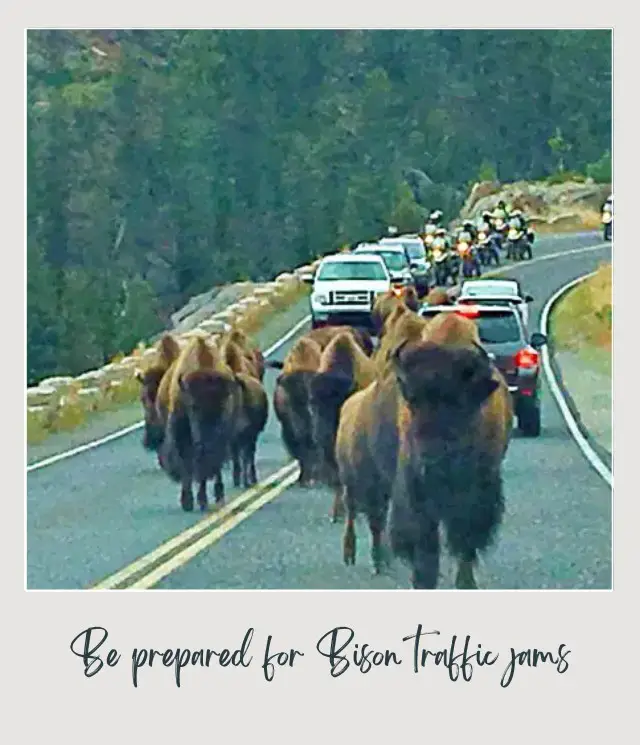
Related to point #1 is the likely possibility of getting stuck in a traffic jam. It’s possible that the traffic jam will be caused by the large volume of people trying to get into a popular area of the park like the Midway Geyser Basin or Grand Prismatic Spring. However, it’s also likely that the traffic jam will be caused by bison.
Bison traffic jams are a thing in Yellowstone. A paved road is much easier to walk on than a field or forest. So, it’s not uncommon for a herd of bison to decide to take the easy path and stroll along the road all together.
As a motorist in this situation, you have to stop, turn off your motor and wait until they’ve decided to stroll slowly past you before you can safely start your vehicle back up and drive away.
This can certainly disrupt your well-laid plans, but sometimes the unexpected moments can be even better than the planned ones, and there is no other opportunity you’ll have to safely and legally be this close to bison, as they walk right up to the front of your windshield and inches away from your vehicle as they pass you.
It’s a big mistake not to be prepared for this, so factor in enough time and go with the flow. Make sure that all your windows are wound up tight and enjoy the show!
#3 Not checking eruption times for Old Faithful (and getting there well in advance)
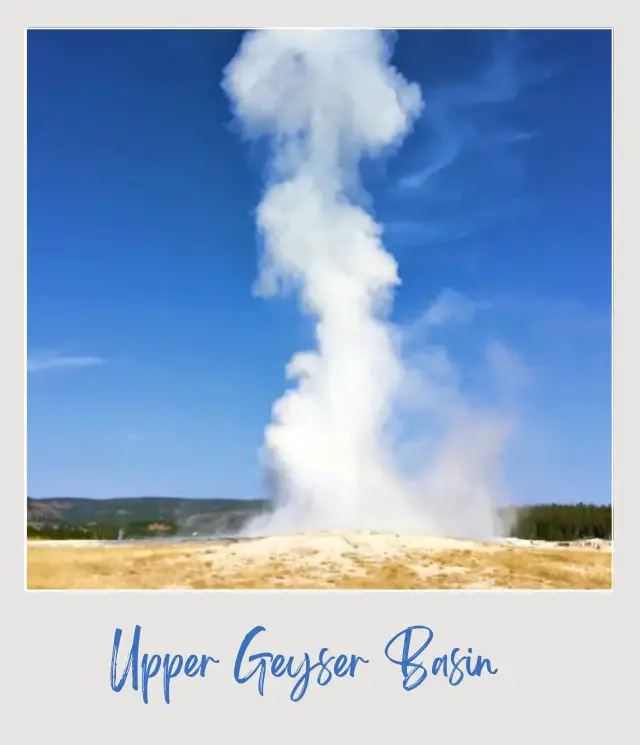
Old Faithful is the most famous geyser in the world. There are almost 500 geysers in Yellowstone but there are only six that park rangers currently predict.
Old Faithful is named because the frequency of eruptions is so predictable.
Although the time between eruptions has lengthened by about 30 minutes in the last 30 years, eruptions can typically be accurately predicted within a +/- 10-minute window based on the timing and strength of recent eruptions.
Old Faithful erupts about 17 times/ day. That’s every 40 – 110 minutes (average every 90 minutes). Eruptions last from 1+1⁄2 to 5 minutes. They range in height from 106 to 185 feet (32 to 56 m) and average 145 feet (44 m).
There is a large viewing area encircling the geyser, with some seating.
A common mistake to make is not checking the anticipated times. And when people do, they often get there just before it is due to erupt. Both of these are a mistake.
It is much easier to plan your trip if you know when the eruptions will be. You can find the predictions for the next eruptions at the Old Faithful Visitor Education Center, at the lodges, in the NPS App, or on Yellowstone’s geyser prediction Twitter feed.
Once you’ve found out, plan to get there about 20-30 minutes before the eruption. That way you’ll beat the crowds and get a seat.
Oh, and plan to wander around Midway Geyser Basin afterwards. Most people depart as soon as the eruption ends and there is a frequently a mini-traffic jam getting out of the area immediately after each eruption ends.
#4 Getting a late start
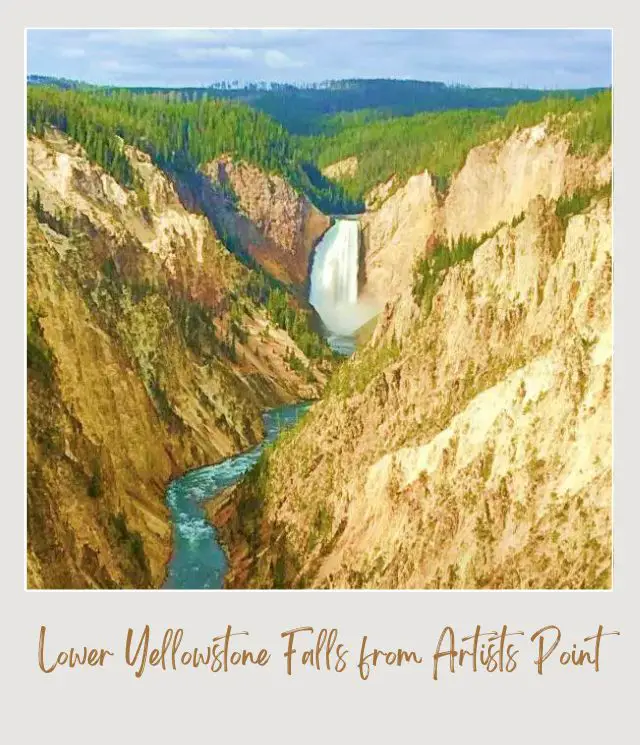
Yellowstone National Park is not the place to go if you want to sleep in and get a late start to the day.
If you do and you’re staying outside the park, you’ll most likely spend ages waiting at an entrance station to get into the park. Then you’ll struggle to find parking at the most popular attractions. And everywhere you go will be crowded.
Rather than making this mistake, it’s much better to get a very early start. You’ll be able to drive right into the park, have a much better chance of seeing wildlife, and nab one of those valuable parking spaces at the more popular areas in the national park.
If you want to see wildlife in Lamar Valley or Hayden Valley, dawn and dusk are the best time, as this is when animals are most active.
So, plan to get up early, then have an early dinner so you’re ready for another early start the next day.
➡️ READ MORE: Lamar Valley Guide
#5 Spending too little time in the park
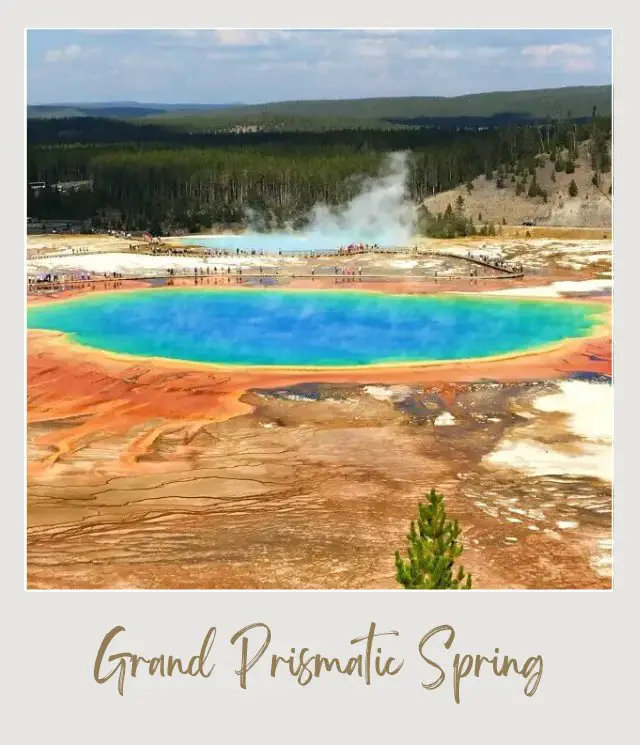
As I mentioned, Yellowstone National Park is big. And there is so much to see and do there. If you only have a day, then you will definitely have a great day, but you will also miss out on a lot.
Consider this:
The incredible variety and sheer number of animals and birds in Yellowstone is staggering. Lamar Valley and Hayden Valley are some of the best places in the country to see bison, wolves, pronghorns, bears, etc.
Yellowstone has the largest number of geothermal features in the country. There are gushing geysers, colorful hot springs, bubbling mud pots, steaming fumaroles and roiling cauldrons.
Yellowstone has its own Grand Canyon. The Grand Canyon of the Yellowstone is a stunning, colorful canyon that is an iconic image of the west.
The Lower Yellowstone Falls is more than twice the size of Niagara Falls. This is just one of almost 300 waterfalls in the park.
At 7,733 feet (2,357 m) above sea level, Yellowstone Lake is the largest high elevation lake in North America.
The Old Faithful Inn is one of the most iconic examples of ‘parkitecture’ and the the largest log structure in the world.
I could go on. But hopefully this gives you some idea of what a huge mistake it is to spend too little time in Yellowstone National Park.
READ MORE:
➡️ Best Things to Do in Yellowstone
➡️ Best Hikes in Yellowstone
➡️ How Long to Spend in Yellowstone
➡️ Best Waterfalls in Yellowstone
#6 Not having a detailed (and flexible) plan
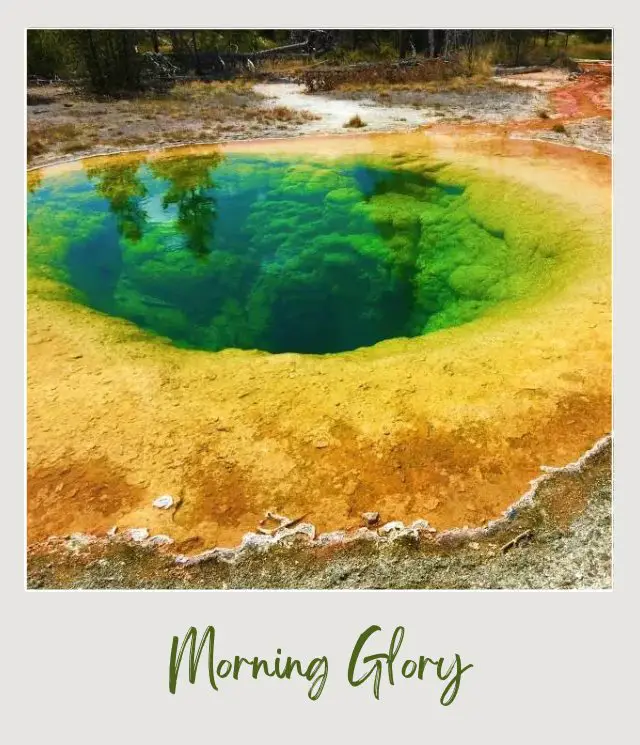
As you can see, visiting Yellowstone is amazing, but planning a trip there is a challenge.
There is so much to do but the distances between the attractions shouldn’t be underestimated. It’s also one of the most popular national parks in the country and can get crowded – and accommodations book out, especially in the summer months.
This is why it’s a huge mistake to ‘wing it’. It’s really important to have a detailed plan – but also be flexible and adjust your plan based on what happens when you’re there. This can be complicated – you need to know realistic times to get places; how long you should spend there; what places you need to go to first to get a parking space and where you can go later in the day; what times are best for each attraction, etc.
If all this sounds daunting, never fear. I have used my own research and experience to create super detailed 1-, 2-, 3-, and 4-day itineraries for Yellowstone that factor all these things in so you can have a ready-made plan plus have the information you need to adjust it as things arise.
➡️ Check out my detailed Yellowstone National Park Itineraries if you want some help with your itinerary planning.
#7 Not packing binoculars or a spotting scope
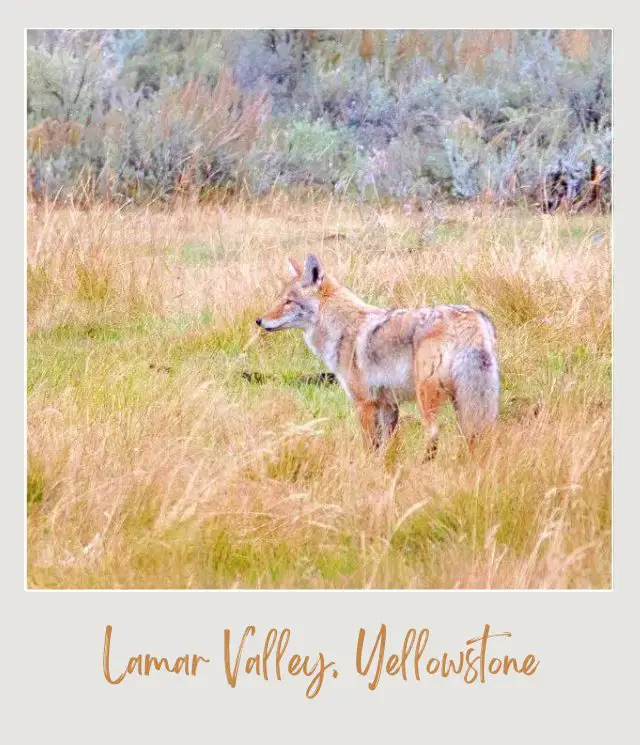
Yellowstone – and in particular Lamar Valley – is often called “America’s Serengeti’, named after the famous game park in Africa. This is because there’s an incredible variety of wildlife in the park and so many animals it is difficult not to see them. Hayden Valley is another popular place to see wildlife.
That doesn’t mean the wild animals oblige you and pose for you. Wild animals are also dangerous and the NPS require all visitors to stay a minimum distance of 25 yards from most wildlife and 100 yards from predators like bears and wolves.
I’ve been there when there was a cluster of people on the side of the road all looking at wolves in the distance. However, the wolves were quite far away and the only way we could see them was through a spotting scope.
Even if animals aren’t that far away, having a good pair of binoculars or spotting scope will make a huge difference. So, not having either binoculars or a spotting scope is a big mistake in Yellowstone.
READ MORE:
➡️ Guide To Buying The Best Binoculars For The Money
➡️ Best Spotting Scope for Wildlife Viewing
Travel Insurance for Yellowstone National Park
If you’re the designated trip planner for Yellowstone National Park, make sure you don’t forget travel insurance.
Good travel insurance covers things like medical expenses, lost or stolen property, trip cancellation, and emergency repatriation.
Of course, not all insurance coverage is equal and you need to check the policy very carefully to see what is – and isn’t – covered. If you want to learn more about all this, check out my Guide to Buying Travel Insurance (on my other website) before getting your insurance.
A great insurance option is Travelex. You can compare Travel Insurance plans here or get a quote right now:
Enjoy your trip to Yellowstone National Park!
More Planning Resources for Yellowstone National Park
⭐ Yellowstone National Park Guide
⭐ Yellowstone Itineraries
⭐ Tips For Visiting Yellowstone National Park
⭐ How Many Days in Yellowstone National Park?
⭐ Guide To Camping In Yellowstone National Park
⭐ How to Visit Yellowstone in Winter
⭐ Best Things To Do In Yellowstone National Park
⭐ The Best Yellowstone Scenic Drives
⭐ Lamar Valley Scenic Drive
⭐ Best Waterfalls in Yellowstone National Park
⭐ Best Hikes in Yellowstone National Park
⭐ Grand Prismatic Spring Overlook Trail Guide
⭐ Best Time to Visit Yellowstone National Park
⭐ Visiting Yellowstone Throughout the Year
⭐ How To Get To Yellowstone National Park
⭐ All The Airports Near Yellowstone National Park
⭐ The Closest Airport to Yellowstone National Park
⭐ 10 Fun Facts about Yellowstone National Park
⭐ Best Books about Yellowstone National Park
⭐ Vacation Rentals Near Yellowstone National Park
⭐ Yellowstone Packing List
Do you have any other mistakes to avoid when planning trip to Yellowstone National Park? I’d love to hear about them. Join my private Facebook group National Parks Collectors and comment and let me know (you can also pick up extra planning tips, share your photos and stories with other national park lovers and more).
Subscribe to daily national parks planning tips, travel inspiration and trip ideas and get instant access to the free PDF of this guide to
7 Mistakes to Avoid When Planning a Trip to Yellowstone National Park
If you liked this Yellowstone National Park trip planner, Pin It to your Yellowstone National Park board!
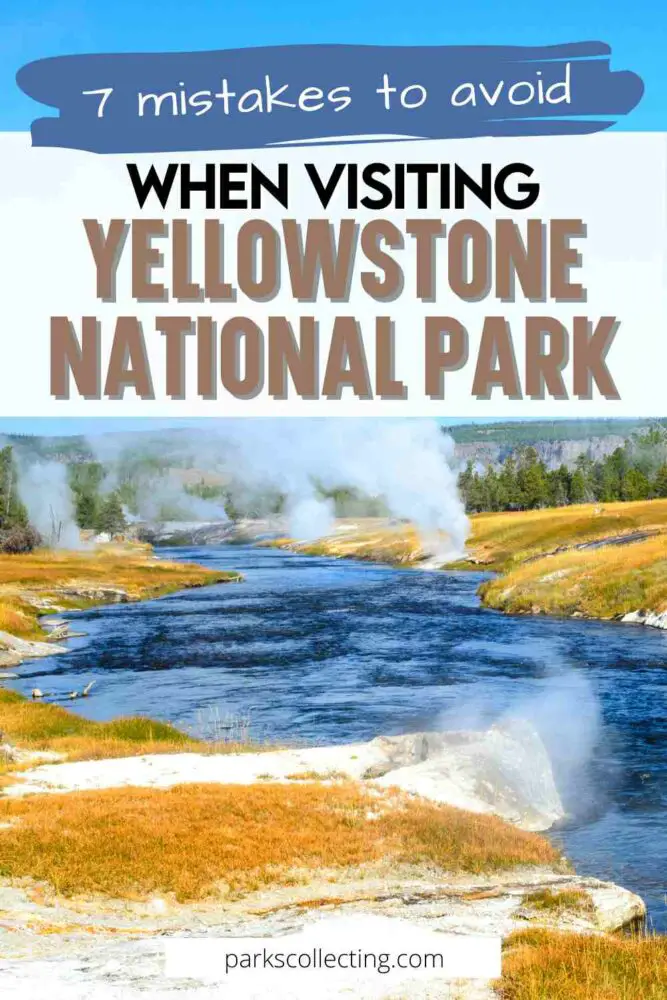

💡 Are you just starting to think about taking a national parks trip? Get Inspiration
‼️ Are you looking for helpful tips for visiting US national parks? Read articles that share useful tips on a range of national-park related issues
💻 Are you starting to plan a trip to Yellowstone National Park? Read my Guide to Yellowstone National Park
📋 Do you want a ready-made super detailed plan for your trip to Yellowstone? Get a detailed 1 – 4-day Yellowstone National Park Itinerary
🛏️ Are you looking for a place to stay in or near Yellowstone National Park? Find a vacation rental near Yellowstone National Park or ⛺ Find a campground inside Yellowstone National Park
💲 Are you ready to book your trip? Use these Planning and Booking Resources
📖 Do you want to read a book about Yellowstone National Park? Check out my Recommended Reading List for Yellowstone National Park
About the Author
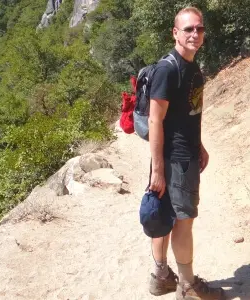
James Ian is a national park, camping and hiking expert.
He has dedicated his life to travel, visiting more than 80 countries, all 7 continents and most of the national parks in the United States. With over 35 years experience in the travel industry, James has worked on cruise ships, at resorts and hotels, and as a travel planner who’s helped hundreds of people plan successful trips to US national parks.
Based on his experience visiting our national parks multiple times, in-depth research and expertise as a travel planner, James has published detailed itineraries for many of the major national parks in the US. These itineraries, as well as in-depth park guides, and other resources will help you have your own incredible trip to US national parks without stress and hassle.
As a national park expert, James has contributed to many publications, including USA Today, Newsweek, Time Business News, Savoteur, Best Trip, and Wired.
I’m a member of the Amazon Services LLC Associates Program. As an Amazon Associate I earn from qualifying purchases.
